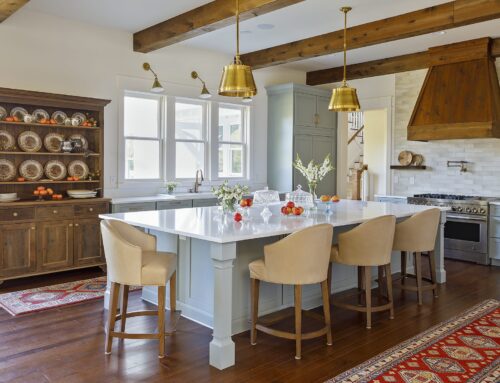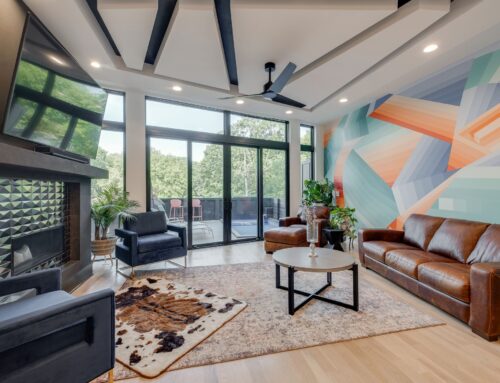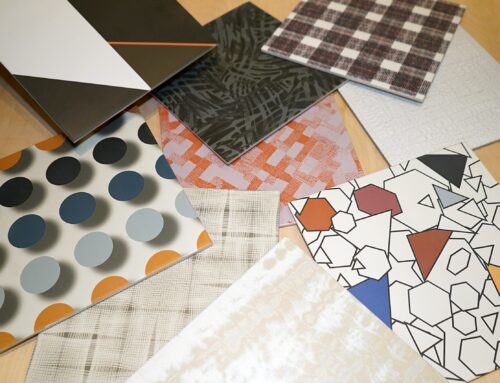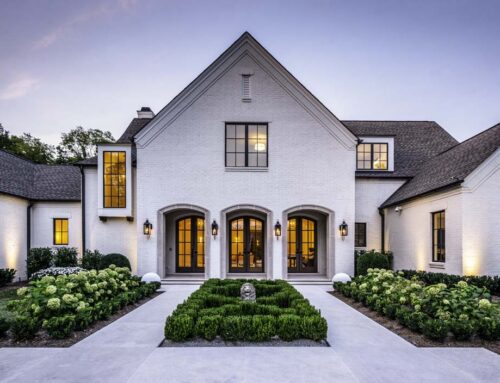Wood and Clad Wood
The most common material for windows is wood, either alone or clad. One of the great advantages to wood besides the incomparable beauty, is that it can be milled into virtually any custom shape. If you don’t want a standard window, wood is for you. Also on the pro-side, it has great insulation value and if you maintain it properly, it will last indefinitely.
Watch out for – Wood swells and shrinks with changes in humidity, so wood windows can stick in a humid summer. Troubleshooting – The key to a long life if you have wood windows, is consistent maintenance ie., paint or stain regularly so that exposed wood doesn’t deteriorate.
A clad wood window is a wood window whose exterior is covered with another material; usually vinyl, aluminum or fiberglass. This window has the advantage of having the look of wood windows on the inside of your home and the maintenance free cladding on the exterior. The different cladding materials have different properties that will affect your selection.
Aluminum Cladding – The advantages to aluminum cladding are its ability to be formed into crisper profiles than vinyl and the wider range of colors to choose from as well as the ability to paint over the aluminum. The disadvantage is the reduced energy-efficiency – typically 10% lower R-Value than a comparable vinyl clad window. For this reason, if you’re drawn to aluminum clad windows, choose the heavier-gauge aluminum.
Vinyl Cladding – The advantages to vinyl cladding are the heavy gauge vinyl and heat-welded covering that make these windows more energy efficient and more water-tight than aluminum. Make sure the cladding covers not only the exterior frame and face of the sash, but also the top where the window is vulnerable to standing water. This is especially important with casement windows. The disadvantage is the limited color choices and the fact that you can’t paint vinyl clad windows. These windows usually come in lighter colors because darker colors are vulnerable to color fading.
Fiberglass Cladding – Fiberglass clad wood windows are a great choice because they are durable, energy efficient, maintenance-free, not affected by heat or cold, and you can either paint them or leave them with the factory finish.
Vinyl Windows
You’ll pay about 3 times as much for a vinyl clad wood window as you will for a vinyl window. The other advantages are, there is no wood to rot, it is maintenance free inside and out, and the heat-welded corners produce strong joints that are air-tight. The disadvantages are the limited color selection with dark colors not widely available, and a somewhat bulky profile. Early vinyl windows had problems with corners opening, UV damage and fading. These problems have been corrected but the way to be sure of the quality of the window is to look for certification from the American Architectural Manufacturers Association. Their suggestion with vinyl windows is to look for:
1 – Heat-welded corners
2 – Metal reinforcing, especially on larger windows
3 – Good hardware
4 – Solid, heavy vinyl that is rigid when you attempt to bend it
Fiberglass Windows
A fiberglass window that has a hollow frame that is filled with insulation is the most energy-efficient window available today. The composite can be molded into interesting shapes, it is unaffected by insects, moisture and temperatures up to 350° as well as being maintenance free. If you really can’t live without the look of wood windows inside, fiberglass windows with a wood veneer on the inside are available. Additionally, fiberglass windows can be painted.
Aluminum Windows
There is no reason to buy an aluminum window. They are the least energy-efficient windows on the market and have absolutely no advantages over wood, wood clad, vinyl or fiberglass windows. Period.





Leave A Comment
You must be logged in to post a comment.